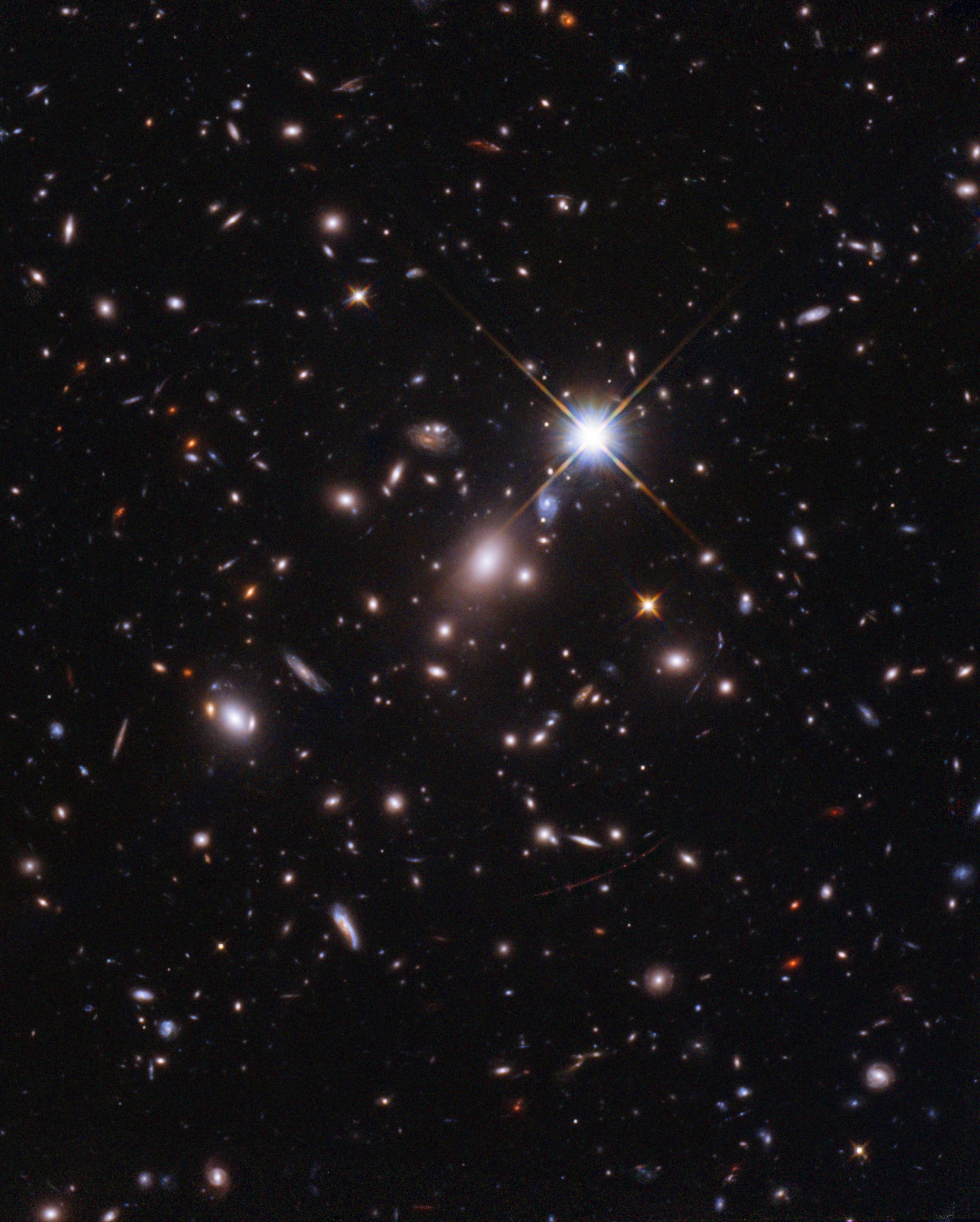Hubble discovered star 12.9 billion light years away
Hubble has discovered a star whose light has been travelling to Earth for 12.9 billion years. This is a new record and a huge leap forward: the previous record holder was only nine billion light years away.
Astronomers led by Brian Welch of Johns Hopkins University in Baltimore have named the star "Earendel" - after an Old English word for the morning star. The researchers were able to track down "Earendel" thanks to cosmic support: between the Earth and the distant star lies a huge galaxy cluster that acts as a gravitational lens, amplifying the star's light by a factor of more than a thousand. The new record-breaking star probably had more than 50 times the mass of our sun and burned up after only a few hundred thousand years, as the team of discoverers reports in the scientific journal "Nature".
Welch and his colleagues compare the effect of the galaxy cluster with the water surface of a swimming pool: The waves refract the incoming sunlight and create a pattern of bright lines on the bottom of the pool. Scientists call such lines caustics - they are areas where the light is extremely amplified. The gravity of the galaxy cluster deflects the light from celestial objects behind the cluster in a similar way to the surface of the water, thus also creating caustics - which can make distant stars visible through their amplification.
Astronomers know of many examples of this, and the previous record holder, which was detected by the "Hubble" telescope in 2018, also lies behind a galaxy cluster. Welch and his colleagues have therefore specifically searched the caustics of such galaxy clusters acting as gravitational lenses for conspicuous objects - with success. Despite the high magnification through the gravitational lens, "Earendel" shows up as a point-like object in a galaxy 12.9 billion light years away.
"Earendel" existed for a maximum of 600 million years
Astronomers thus see the star as it looked 900 million years after the Big Bang. Today, "Earendel" has long disappeared, because the greater the mass of a star, the hotter and brighter it burns and therefore consumes its energy supply much faster. While a star like our sun exists for about ten billion years, "Earendel" probably exploded as a supernova after a maximum of 600 million years and then went out.
However, Welch and his colleagues have not yet been able to make any more precise statements about the distant star - the researchers need the new "James Webb Space Telescope" for this. This should make it possible to break down the light from "Earendel" into its wavelengths and thus obtain information about its composition and temperature - an important insight for astronomers into the history of the first stars in the young cosmos. (APA)

